Overview
This page last updated on 19-Jun-2023
Special Offer to CSM Students
Im offering a special deal to CSM students. You can subscribe to the online version of the CREG journal (see samples) for free (normally £4) and you can subscribe to the printed edition – four quarterly issues – for £5 (normally £16). To take up this offer, please contact me. (If your message to my Exeter address bounces, please see the information here). Additionally, for the offer to be valid, you must give an email address at exeter.ac.uk and, for the printed version, you should have a delivery postcode that begins with TR. Offer expires at the end of 2023.
Research
From July 2017 to June 2020, I worked on a three-year research project funded by the European Commission's Research Fund for Coal and Steel (RFCS) to investigate "Information Driven Incident Response" (Project name: INDIRES). The objective was to enable critical information to be gathered during a serious mining incident, without reliance on a mine's fixed power or communication network, to aid personnel rescue and mine safety. My main role was to investigate resilient forms of through-rock radio data communication using novel antenna structures and mesh networks.That project has now been written up.
Because my funding came from the EU I am no longer funded for work at the university. I am now an Honorary Senior Research Fellow but that post is due to terminate on 1 July 2023. I am still working on "outcomes" from the INDIRES project and, hopefully, I will be able to report further on this in due course, but you might have to visit my personal website for that.
I started working at the Camborne School of Mines in January 2016, and was involved in two previous RFCS projects at CSM: M-SMARTGRID (mine power engineering) and STAMS (monitoring of flooded shafts). See the Research tab for further information.
Background
Summary of Career History
- By training, I am a mathematician and electronic engineer. I hold an MA degree from the University of Cambridge.
- My early career was that of an electronic hardware development engineer, familiar with SMEs and manufacturing.
- My PhD thesis, at the University of Leeds, was a study of sub-surface radio communications.
- From 2003 I was a research project manager at the UK’s Mines Rescue Service (MRSL). During this time, MRSL contributed to 19 research projects, most of them funded by the European Commission’s Research Fund for Coal and Steel (RFCS). I contributed to some 14 of these, with a significant contribution to seven.
- From 2016 I have been working on EU-funded RFCS projects at the Camborne School of Mines.
- From July 2020 I have been an Honorary Senior Research Fellow. Apparently, honorary appointments do not confer access to Symplectic Elements so you cannot view my current research there. See my Recent Publications instead.
Research Interests
My research interests are centred around sub-surface radio communications although, for various reasons, through-rock radio is not usually a high priority in the mining world. I am interested in applying the principles to sub-sea work and I have some ideas on non-conventional radio antennas for LF radio. See the Research tab for further information.
I am also involved with BCRA's project to set up a Cave Science Centre at Poole's Cavern in Derbyshire. The facility is being designed to encourage undergraduates to undertake projects relating to cave science, climate and environment. See the External Activities tab for further information.
Other Activities
I am a Trustee of the British Cave Research Association (BCRA; a registered charity) and am currently its secretary. Previous posts in BCRA have included administrator of its research fund, editor of its magazine, Speleology; and the technical editor of the journal of its Cave Radio & Electronics Group. See the External Activities tab for further information.
Publications
The Publications tab includes, in its listing, a selection of the many articles I have written for the CREG Journal. To see a full list of my CREG articles, you can use my CREGJ search engine.
Further information
Personal Homepage
This page last updated on 19-Jun-2023
Special offer to CSM Students: Im offering a special deal to CSM students. You can subscribe to the online version of the CREG journal (see samples) for free (normally £4) and you can subscribe to the printed edition – four quarterly issues – for £5 (normally £16). To take up this offer, please contact me. (If your message to my Exeter address bounces, please see the information here). Additionally, for the offer to be valid, you must give an email address at exeter.ac.uk and, for the printed version, you should have a delivery postcode that begins with TR. Offer expires at the end of 2023.
No other content here yet, but you can visit my external web site at at http://site2.caves.org.uk/mcrosolv/
Research
This page last updated on 19-Jun-2023
This page lists my current research projects at the Camborne School of Mines, as well as earlier projects that I undertook at the Mines Rescue Service, and some of my personal research interests.
Scroll down for...
My Research Interests
In addition to the projects I am funded for at the moment – see Current Projects – I have a number of other personal research interests, as listed below. Notes on these topics might be added in due course (this note dated 27-Oct-2022).
- Radio antennas using high-permittivity ceramic tiles
- The use of a torus (or anapole) as a radio antenna
- Algorithms for creating conjugate gear profiles
- Ferro-electric materials for small power generators (energy harvesting)
- Virtual machines and threaded interpreters (microprocessor and compiler design)
- Properties of binary sequences (inverse sequences, single-channel Gray codes)
- Data-logging and monitoring in caves (especially as part of climate-change models - see External Activities)
- Chemical reactions between starches and sugars
-
Construction of a portable time spinner ('procrastinator') and a symbol reader (An out-of-hours project - see my steampunk essay
 )
)
I also have an interest in collecting examples of "hoaxes" in physics. That is, people who disbelieve Maxwell, Einstein or Hawking, and who promote their unsubstantiated ideas counter to the principle of quod supplantandum, prius bene sciendum. I have half a dozen on my list now. Further reading: see Mateus Araújo's blog Crackpots in my Inbox
Recent Projects
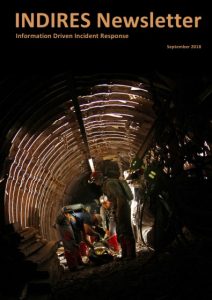
INDIRES Newsletter 1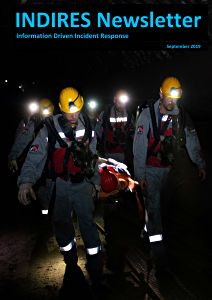
INDIRES Newsletter 2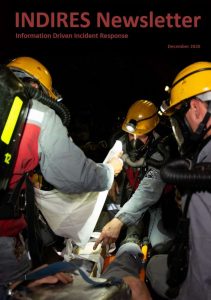
INDIRES Newsletter 3 |
RFCS INDIRES
RFCS STAMS
|
Earlier Projects
From 2003 to 2012 I was a Research Project Manager at the UK's Mines Rescue Service (MRSL). This table lists the research projects undertaken by MRSL and my involvement. Final Reports for all the RFCS-funded projects are available as free downloads from the European Commission's Europa Bookshop - just type the ISBN into the search box.
- just type the ISBN into the search box.
| Project | Full Title | My contrib. | Me as listed author? | Contract | Publishing year and ISBN | |
| PR-133 | Extending the utility of underground data transmission networks and other data processing equipment | ★★★ | ?? | ECSC 7220 PR-133 | 2005? | |
| UPTUN | Upgrading of existing Tunnels (UPTUN); Workpackage 3 Human response; Deliverable 3.3; Human Factors Aspects in Tunnels: Tunnel User Behaviour and Tunnel Operators | ★★★ | ?? | EU FP5 G1RD-CT-2002-766 | 2006? | |
| EPCWCMS | Enhancing the performance of mine communication, warning and condition monitoring systems | ★★★ | RFCR-CT-2003-00003 | 2008 | 978-92-79-08172-9 | |
| WATERCHEM | Optimisation of mine water discharge by monitoring and modelling of geochemical processes and development of measures to protect aquifers and active mining areas from mine water contamination | ★★ | RFCR-CT-2003-00006 | 2008 | 978-92-79-08777-6 | |
| SAFETECH | Optimisation of surveillance, technical equipment and procedures to prevent workers from danger attributed to fire, hazardous or toxic gases, firedamp or climatic conditions | ★ | RFCR-CT-2003-00010 | 2008 | 978-92-79-08717-2 | |
| IAMTECH | Increasing the efficiency of roadway drivages through the application of advanced information, automation and maintenance technologies | ★★ | ✔ | RFCR-CT-2004-00001 | 2009 | 978-92-79-11704-6 |
| ADEMA | Advances in exploration methods and applications | ★★★ | ✔ | RFCR-CT-2005-00001 | 2010 | 978-92-79-14549-0 |
| RAINOW | Researching the applications of open innovative wireless technologies | ★ | RFCR-CT-2005-00003 | 2010 | 978-92-79-14145-4 | |
| NEMAEQ | New mechanisation and automation of longwall and drivage equipment | RFCR-CT-2006-00001 | 2011 | 978-92-79-21598-8 | ||
| MINTOS | Improving Mining Transport Reliability | RFCR-CT-2007-00002 | 2012 | 978-92-79-22247-4 | ||
| ADRIS | Advanced Drivage and Road-Heading Intelligent Systems | ★★★ | ✔ | RFCR-CT-2007-00002 | 2012 | 978-92-79-22226-9 |
| MINFIREX | Minimising risk for and reducing impact of fire and explosion hazards in underground coal mining | RFCR-CT-2007-00003 | 2012 | 978-92-79-22247-4 | ||
| PRESIDENCE | Prediction and Monitoring of Subsidence Hazards above Coal Mines | ★★ | RFCR-CT-2007-00004 | 2012 | 978-92-79-22246-7 | |
| EDAFFIC | Early detection and fighting of fires in belt conveyor | RFCR-CT-2008-00002 | 2013 | 978-92-79-25117-7 | ||
| EMTECH | Mine Emergency Support Technologies | ★★★ | ✔ | RFCR-CT-2008-00003 | 2013 | 978-92-79-29320-7 |
| EMIMSAR | Enhanced Miner-Information Interaction to Improve Maintenance and Safety with Augmented Reality Technologies and New Sensors | ★★★ | ✔ | RFCR-CT-2009-00002 | 2013 | 978-92-79-33083-4 |
| LOWCARB | Low carbon mine site energy initiatives | RFCR-CT-2010-00004 | 2014 | 978-92-79-40328-6 | ||
| MISSTER | Mine shafts : improving security and new tools for the evaluation of risks | ★ | RFCR-CT-2010-00014 | 2015 | 978-92-79-45342-7 | |
| COGASOUT | Development of novel technologies for predicting and combating gas outbursts and uncontrolled emissions in thick seam coal mining | ★ | RFCR-CT-2010-00002 | 2015 | 978-92-79-43619-2 | |
External Activities
This page last updated on 19-Jun-2023
Scroll down for ResearchGate, CREG journal, BCRA Trustee, Hidden Earth, Awards and Prizes.
ResearchGate
I have a user profile at ResearchGate that includes contributions to ResearchGate's questions and answers section.
CREG Journal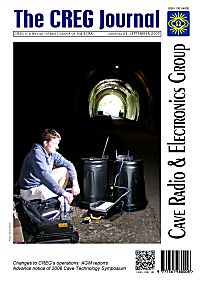
The Cave Radio and Electronics Group is a Special Interest Group of the British Cave Research Association
is a Special Interest Group of the British Cave Research Association . I have been involved with it almost since its inception in 1998. I have held posts as the Group's journal editor, technical editor and treasurer. I am also (alongside my CSM colleague Mike Bedford) one of its principal authors, with around 300 contributions to the journal.
. I have been involved with it almost since its inception in 1998. I have held posts as the Group's journal editor, technical editor and treasurer. I am also (alongside my CSM colleague Mike Bedford) one of its principal authors, with around 300 contributions to the journal.
- A small selection of my contributions are listed in the Publications list of my staff profile.
-
To see a full list of my CREG articles, you can use my CREG Journal search engine
 .
. - In 1993 I won an award for my work as the editor of the CREG journal - see Awards/Prizes below.
Photo: The photo (above or opposite, as your web browser dictates) shows Gareth Kennedy, a former lecturer at CSM, setting up wifi equipment in a disused railway tunnel at Ashbourne, in Derbyshire, to perform experiments that were part of the RFCS RAINOW project. (Photo by David Gibson).
Trustee of the British Cave Research Association
 I have been closely involved with the British Cave Research Association
I have been closely involved with the British Cave Research Association , a UK charity, since about 1990. I have held several posts, including its research-fund administrator. From 2010 to 2022 I was the honorary secretary. I am still a trustee of the Association.
, a UK charity, since about 1990. I have held several posts, including its research-fund administrator. From 2010 to 2022 I was the honorary secretary. I am still a trustee of the Association.
I also maintain BCRA's web site and supervise its publications operations. This extends to writing code for the sales operations on the web site, editing and laying out some of its publications and organising their printing.
From 2003 to 2013 I supervised the production of the journal Speleology , and I was the editor of many of the issues.
, and I was the editor of many of the issues.
At the moment (20220) I am involved with BCRA's project to set up a Cave Science Centre at Poole's Cavern in Derbyshire, as part of the team providing loggers and Internet connectivity. The web site, still under development (March 2022) is at cave-science.org.uk.
The facility is being designed to encourage undergraduates to undertake projects relating to cave science, climate and environment. The rationale is that undergraduates are sometimes disscouraged by universities from entering caves. Even with the promise of nationally-qualified cave 'minders', students have sometimes been unable to get permission to go underground in 'wild caves' to perform experiments and to undertake research as part of their degree dissertations. Some articles about the Cave Science Centre have appeared in the CREG Journal  (Search for "Cave Monitoring Centre", because the facility was initially known as that). Also see my article Building Rugged Equipment for Use in Caves, at bcra.org.uk/cregj/?j=109
(Search for "Cave Monitoring Centre", because the facility was initially known as that). Also see my article Building Rugged Equipment for Use in Caves, at bcra.org.uk/cregj/?j=109
Cave research is important for several reasons – limestone aquifers are an important resource for a large part of the world’s population, and so tracing water flow (and water pollution) is important. Caves also provide a historical climate record, in speleothems, that is important in environmental research into climate change.
Hidden Earth
Each year, BCRA runs a national conference known as Hidden Earth . I am part of the organising team for that event.
. I am part of the organising team for that event.
Recently, we have experimented with a network of computers that provide timetable displays, as well as news and information. The latest iteration uses a Raspberry Pi computer at the heart of each ‘information point’, which operates a web browser, pulling information from a local web server. Read my notes on this project by searching the CREG journal for Hidden Earth Timetable Display
Awards and Prizes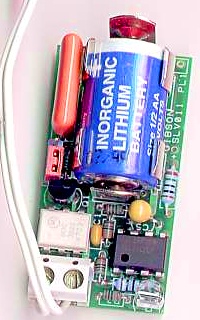
I have never won anything significant, and certainly not in my professional life. The closest I can get is two of the national caving awards, administered by BCRA.
-
1996: Giles Barker Award for cave photography, for my design of a Flashgun Slave Unit
 that was subsequently used by many cavers around the world.
that was subsequently used by many cavers around the world. -
1993: Tratman Award for speleological literature, for the CREG Journal
 .
.
It was some time ago now, but I also have...
- 1972: National Cycling Proficiency Certificate
- 1969: Quarter Mile Swimming Certificate
I dont think I was ever a blackboard monitor.
Recent Publications
This page lists some of my more recent publications. Unfortunately, I cannot add them to the university's list because an honorary appointment does not confer access to Symplectic. So, here are some recent notes from the CREG journal. Click on the "CREGJ" links to go to the CREG Journal web site.
Page last updated on 19-Jun-2023
Comparing Loop and Line Antennas for Cave Radio Applications – 1, CREGJ 122, pp14-16. June 2023
An induction-loop transmitter can operate at a higher current than a grounded electric dipole because the loop has a relatively low resistance when compared to the resistance between two earthed electrodes. However, the magnetic field from a loop falls off more rapidly with distance, so it is not straightforward to say that one antenna is better than the other. Several other factors, both physical and practical, come into play. In this article, David Gibson outlines how we might go about making a comparison. This is a nonmathematical article – a more complete treatment will be given in part 2 of this article.
Current Problems in Cave Radio, CREGJ 121, pp11. March 2023
Although through-rock radio is now well established, there are a number of puzzles that David Gibson asserts would benefit from further study.
The Circle of Least Confusion, CREGJ 118, pp16-17 + appendix. June 2022
David Gibson describes a term in optics and photography that is used to derive the range of distances – the depth of field – over which a subject remains in good focus. This does not, of itself, require restating here, although there are some circumstances, such as the construction of stereoscopic and stacked-focus images, where a recap is useful. Additionally, there is a modification to the standard formula that extends its use to small-format digital cameras.
Applications of Chain Codes for Position Encoders, CREGJ 117, pp16-18 + online demo. March 2022
Linear and rotary position encoders can measure position using a single-track binary sequence known as a chain code. In a follow-up to his article in CREGJ 116, David Gibson gives some further explanation of how chain codes can be used.
Underground 'Radio' Powered by Compressed Air, (Letter to the Editor), CREGJ 117, p21. March 2022
Viewing Poster-Sized Stereo Pairs, CREGJ 117, p22-24&1. March 2022
(also see update in CREGJ 119, p20)
Stereoscopic pairs are traditionally viewed using a handheld 3D viewer. But when printed in a magazine or shown on a display board, such images are difficult to view unaided, as well as being necessarily very small because the centrelines of the images must match that of the eye. For stereo pairs to have an impact, they must be larger, but a traditional method of viewing larger images requires them to be printed in false colours, thus making them impossible to appreciate without special tinted glasses. In this article, David Gibson describes a simple technique that avoids this problem and allows poster-sized full-colour photos to be viewed without any artificial aid. Significantly, this allows them to be fully-appreciated both as flat images and as stereo pairs.



